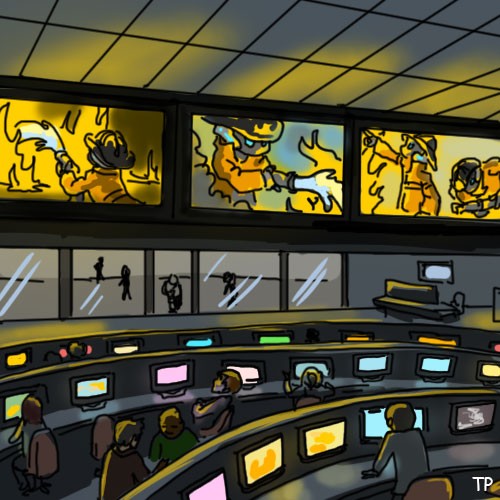
Robot Firetruck: First firetruck that is computer-driven and responds to fires. It carries on board
all of the other four firefighting robots of the Firefighting category without a human firefighter on board and then they fight a fire while being supervised by a central control center where at least one human firefighter oversees them. [Firefighting is a dangerous profession for humans. It is time to turn over this dangerous job to robots. With this challenge, human labor (and thus its cost) can also be saved by only employing humans to supervise robot firefighters from a control center.
Future Challenges:
1) First major US city (population of 250,000 or more) to replace all of its human firefighters with robot firetrucks.
2) First US state to mandate that all fire departments use robot firetrucks to fight fires in their state and no longer allow human firefighters to do so.
3) Once Future Challenge #2 is achieved by a US state, the first US state to pass a law that requires all fire departments within the state to bill fire insurance companies for fire protection and NOT use any taxpayer money to provide fire protection. The fire insurance companies pay a monthly fee to cover the overhead of the fire departments in the state and, when a fire occurs where they're (one of) the insurers, they pay the cost of responding to that fire. If a building doesn't have fire insurance, it will receive fire fighting assistance just as buildings with fire insurance do and the cost of this uninsured building will be considered part of the overhead cost of the fire departments. [People will still get fire insurance since lack of fire insurance means no coverage of loss caused by fire.] Fire insurance companies pay a proportional cut of the monthly overhead costs of the fire departments based on what portion of all monthly fire insurance money is collected in the state by that fire insurance company. The state law must also allow fire insurance companies to review all fire department expenses and provide a real way for potential savings to be suggested and implemented without loss of fire protection. Fire insurance companies within the state can form their own review panels of fire department expenses, jointly employ accounting firms to go over those expenses, and fund research centers to develop ways of reducing such expenses in the future. The law must also allow private sector companies to bid to provide fire protection services (i.e., running the control centers for the robot firetrucks).
